THE SOURCE: Outlander TV Series and Book Series
THE EPISODES: 1-8; book one.
THE FOLKLORE: Stone Circles, Scottish Highlands, Witches, and Halloween.
Folklore of Outlander
With the first half of Outlander season 1 now at an end, we need something to fill the void (aside from the books of course) and what could be better than looking into the folkloric influences of Diana Gabaldon’s book series and Ronald Moore’s TV adaptation? Are there tales of mythical standing stone circles to be discovered? What about Druids and witches? Here is just a little of what I found (I recommend a much deeper look if folklore fascinates you as much as it does me). I hope you find the storytelling and historical roots just as enchanting as I did.
The Scottish Highlands
Storytelling has had a strong presence in the Scottish Highlands for several centuries. Storytellers, called bards, harpers, and also seanachies, started out as oral tellers. However, there were also Christian scribes (mainly monks) keeping records of Scottish history, including folktales and folksongs. They were the “story collectors,” similar to that of the Grimm brothers collecting oral tales and converting them to the written word (Leodhas 7).
Eventually, wandering seanachies (around the 1600s) started traveling around telling tales “suited…to the people to whom they were told” (8). In the TV show, we even have an instance of the bard singing folktales to the clan, the folktale giving Claire hope she could return home if only she could escape to Craigh_na_Dun.
That story reflected their culture and awe of the standing stone circles, something I will delve into later. First, let’s look at their folklore in general.
Sorche Nic Leodhas writes in his book, Heather and Broom: Tales of the Scottish Highlands, that there is a “difference between Highland and Lowland Scottish tales…in the style of the telling” (9). In the Highlands, the tales are more poetic with a dance like quality, while the Lowlands are more straight forward and “matter-of-fact” (9). Moreover, in the Highlands, while witches were to be feared and hated, “the fairy folk [were] simply a different race of people,” a people that “[in] the Highland stories the human beings live with…and among them in intimacy” (10). These viewpoints are often reflected in their folklore with stories of malevolent witches (some just deemed healers) or those of the fairy folk (best be on your top behavior in case any were secretly listening) living or visiting in your midst.
Furthermore, in the Scottish Highlands, pride of their family, forefathers, and homeland were all greatly important and that was reflected in the tales. One of the strongest reflections of Scottish society in their folklore, however, was superstition. In the show and book series, we see these fears of the unknown reflected in the suspicion of Claire being a witch.
Early on in the show, Claire dreams of telling a friend the truth about her time travel only to be accused of witchcraft. Superstition is even better evidenced in the TV series when the clan falsely believes two boys were possessed by a devil rather than poisoned by a deadly plant. In Scottish folklore, this fear of witches is certainly perceived in many tales, including “The Witch of Fife” (The Scottish Fairy Book) about a man who discovers his wife is a witch. Interested in her mysterious travels and adventures in the middle of the night, the husband secretly follows her only to end up getting burnt at the stake himself as a warlock.
The magical quality of the unknown was definitely of considerable importance, “the life of the Scottish Highlander…up to comparatively recent times, not only rich in lore and legend…but completely hedged round by tabu….The Otherworld forces, and the fairies, spectres and monsters of moorland, hill and water were as real, substantial, and infinitely more menacing than were one’s own human fellows” (Ross, Folklore of the Scottish Highlands). The people of the Scottish Highlands truly believed in fairies, brownies, giants, and other magical folks and creatures. With this rich background in a culture that loved magical tales told from one generation to the next, Outlander has a fascinating parentage, a story perfectly representative of the oral tradition found in the Scottish Highlands.
The Eve of Samhain
In episode 3, Claire listens to a folktale (as Jamie translates from Gaelic) that seems to reflect her own life. The tale went like this:
JAMIE: “Now this one is about a man out late on a fairy hill on the Eve of Samhain who hears the sound of a woman singing sad and plaintive from the very rocks of the hill. ‘I am a woman of Balnain. The folk have stolen me over again, ‘the stones seemed to say. ‘I stood upon the hill, and wind did rise, and the sound of thunder rolled across the land. I placed my hands upon the tallest stone and traveled to a far, distant land where I lived for a time among strangers who became lovers and friends. But one day, I saw the moon came out and the wind rose once more. So I touched the stones and traveled back to my own land and took up again with the man I had left behind.”’
While this made up folktale in the series is fictional and written for Outlander, the idea of Gabaldon’s standing stones is nothing new and neither is the importance of the Eve of Samhain. For those unaware (though it is briefly mentioned in episode 1), the Eve of Samhain is a kind of festival, a Gaelic one that marks the end of the harvest season, Samhein also marking the first day or New Year. Additionally, “according to Irish mythology, Samhain…was a time when the doorways to the Otherworld opened, allowing the spirits and the dead to come into our world” (“Samhain,” Wikipedia). In fact, Halloween (or All Hallows Eve) descends from this ancient pagan festival. According to the Celts, “On that day all manner of beings were abroad: ghosts, fairies, and demons–all part of the dark and dread” (Santino, “The Fantasy and Folklore of All Hallows”).
Significantly, when Claire travels back in time, it is soon after an old Sowen (Samhain) ritual is performed by a group of druids at the standing stone circle. Ancient legends and mysteries surround both the stones and the Eve of Samhein (when considering the Celtic tales), such as the Eve opening the worlds between the fairy realm (and other realms) into the human world.
The idea of “travel” leaves the door wide open for ‘time’ to make for an interesting interpretation by Gabaldon as well as that ghostly figure seen by Frank in episode 1. Was Jamie visiting Claire from the dead perhaps on the one night he could?
The Standing Stone Circles
Craigh na Dun is a fictional stone circle in Outlander, but where could this idea come from? In an interview with National Geographic, Diana Gabaldon explains her interest in Scotland’s stone circles:
Diana Gabaldon: “Every time I’d read about the stone circles, it would describe how they worked as an astronomical observance. For example, some of the circles are oriented so that at the winter solstice the sun will strike a standing stone. But all the texts speculate that nobody knows what the actual function of these stone circles was. And so I began thinking, Well, I bet I can think of one.” – http://news.nationalgeographic.com/news/2014/08/140808-outlander-scotland-orkney-islands-stonehenge-neolithic/
This one idea became a sort of made up folktale in Moore’s adaptation. As Mrs. Graham tells Frank in episode 8 (to offer up a possible explanation for Claire’s disappearance), there are legends surrounding the stone circles, legends descended from folktales and oral tales told from one generation to the next. She says,
“The stories are old. Some say as old as the stones themselves, passed down from generation to generation through ballads and songs. I first heard them from my grandmother, and she from hers. The songs tell stories about people who travel through the stones….Not literally through the stone itself. You see, the circle at Craigh Na Dun marks a, a place on the earth where the powers of nature come together….The stones gather the powers and give it focus, like a glass…and for certain people, on certain days, it allows them to pierce the veil of time.”
The show and book tell their own version of the stone circles, but what about real folktales and legends passed from one generation to the next?
A few folktales suggest the standing stones came from giants turned to stone (“Orkney’s Giant Folklore”), but that is just one explanation of their mystery according to legend. Often, these stones of Orkney are called walking stones because of their “yearly march” (Black, “Country Folklore, 4), as in once a year the stones would get up and walk “towards Birsay Loch” (3). Legend and superstition followed the walking stones with tales of curious people watching the stones during their march only to be mysteriously dead come morning (3-4). Moreover, Archeologist James Ritchie writes in his article, “FOLKLORE OF THE ABERDEENSHIRE STONE CIRCLES AND STANDING STONES,” that “the idea that the stone circles and standing-stones are under the special care of the spirit-world is widely prevalent” (305). This explains why many still exist today, for it was said that “the spirits…resented human interference with the circle” (305). Many tales told of men removing the stones only to be punished with disease of cattle and other terrible reprimands (305).
The stones were also seen as an avenue of worship amongst druids, many called Druids’ Stones and Circles, referring to “heathen worship” (305-306). Still, Christianity played a part in the history as well, with meetings once held there and “some of the circles are [even] associated with the names of the early saints” (308). These examples are of course just barely scratching the surface.
Whatever their origins, the connection between the spirit world (or otherworld as it is often called in Scottish folklore) of standing stones to the fictional stone circles of Outlander, works as the perfect vessel for Claire to travel back in time. Utilizing Sanheim alongside the stone circles (i.e. “certain days”) is even more consistent with legends and mythology because of that idea of traveling between realms, and the other world opening the doors for just one day. Everything just comes together rather nicely.
Outlander
Aside from Standing Stones and Sanheim rituals, Gabaldon’s influence from Scottish and Celtic folklore merges into a different area when the Loch Ness (or waterhorse) comes into play, already briefly mentioned in episode 8 as one of the clansman told tales of the water horse around the fire. Sea legends and tales are quite popular in the Highlands, but I think that is for another day…
Until Then…
If you’re in love with the series and beautiful filming locations, there’s a new Outlander Tour offered in Scotland by Brit Movie Tours I just found out about! It’s a day tour where you’ll be taken by a local tour guide and expert to visit the filming locations of Inverness, Castle Leoch and more. You can learn about the tour HERE.
References:
Black, George Fraser, and Northcote W. Thomas. County Folk-Lore, vol. 3: Examples of Printed Folk-lore Concerning the Orkney and Shetland Islands. London: Published for the Folk-Lore Society by David Nutt, 1901.
Grierson, Elizabeth W. The Scottish Fairy Book. With illustrations by Morris Meredith Williams. New York: Frederick A. Stokes Company, 1910. Print.
Leodhas, Sorche Nic. Heather and Broom: Tales of the Scottish Highlands. New York: Holt, Rinehart, and Winston, 1960. Print.
“Orkney’s Giant Folklore.” Orkneyjar: the heritage of the Orkney islands. Web. http://www.orkneyjar.com/folklore/giants/walkstones.htm
Ritchie, James. “FOLKLORE OF THE ABERDEENSHIRE STONE CIRCLES AND STANDING STONES.” Archaeology Data Service. PDF Document: http://archaeologydataservice.ac.uk/archiveDS/archiveDownload?t=arch-352-1/dissemination/pdf/vol_060/60_304_313.pdf
Ross, Anne. Folklore of the Scottish Highlands. Stroud, Gloucestershire: History Press, 2013. EBOOK.
“Samhain.” Wikipedia: http://en.wikipedia.org/wiki/Samhain
Santino, Jack. “The Fantasy and Folklore of All Hallows.” The American Folklife Center. The Library of Congress, September 1982. Web. http://www.loc.gov/folklife/halloween.html
RELATED:
Read our Review of Outlander HERE
Photo Credits: Starz

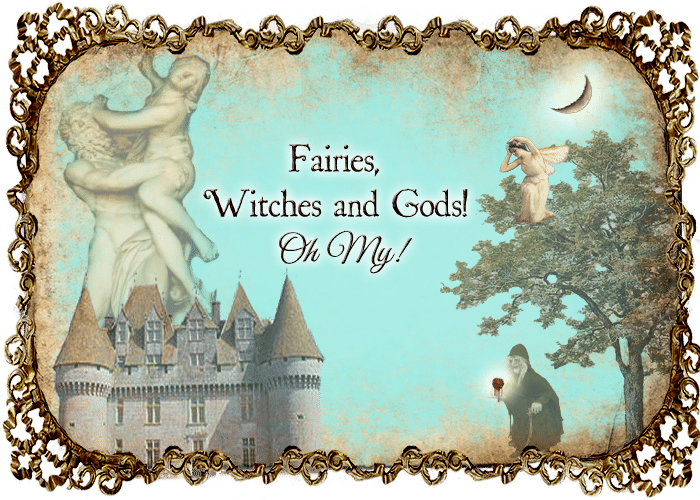

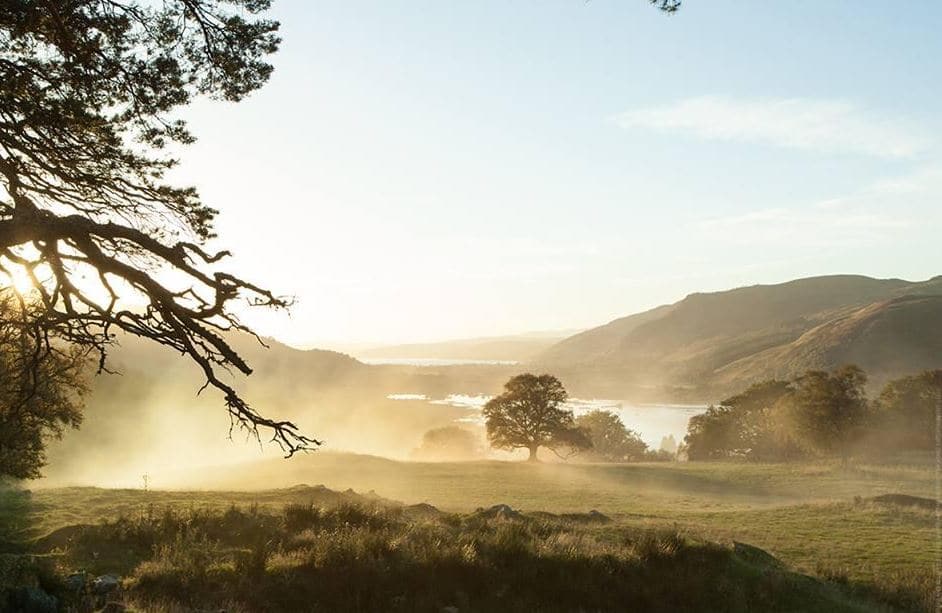

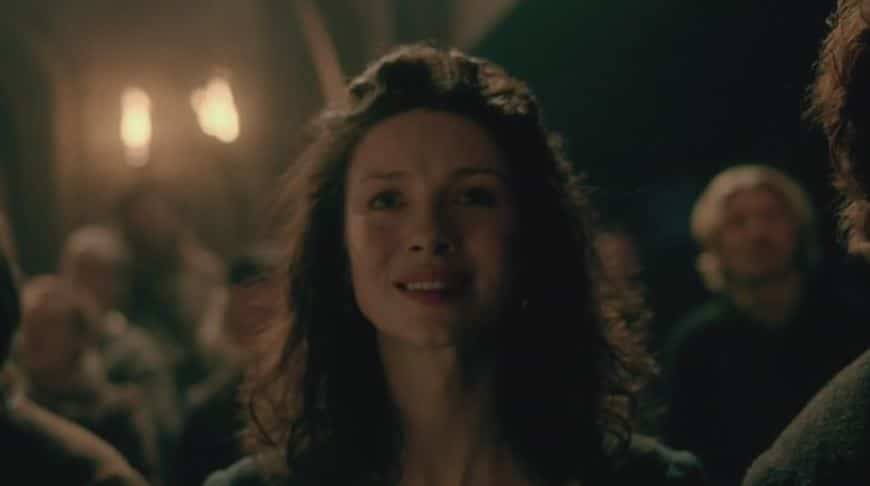
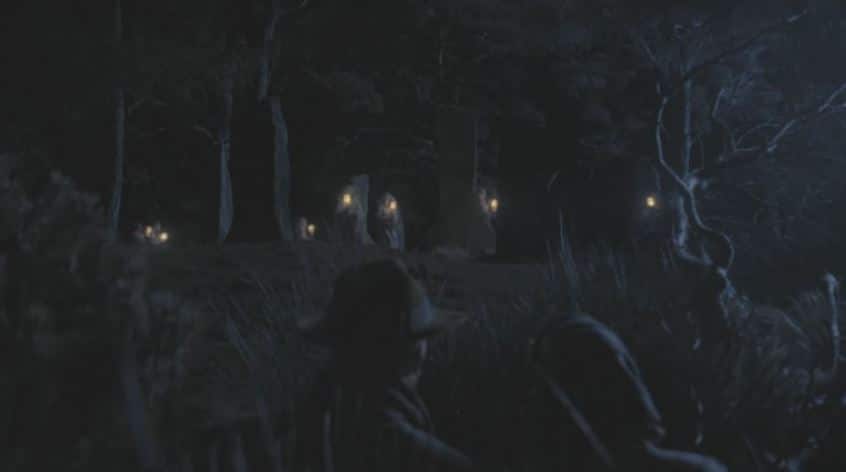
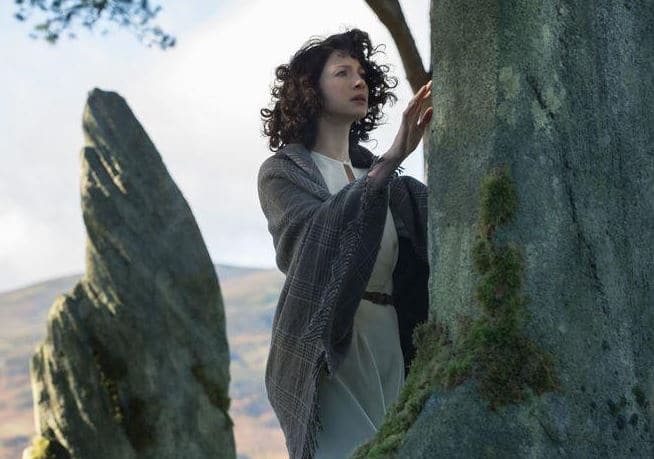
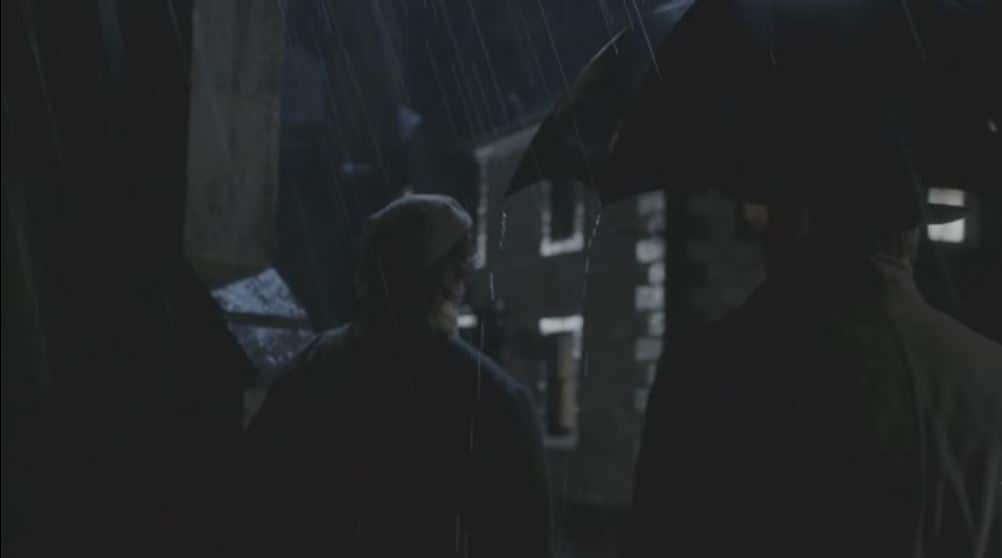
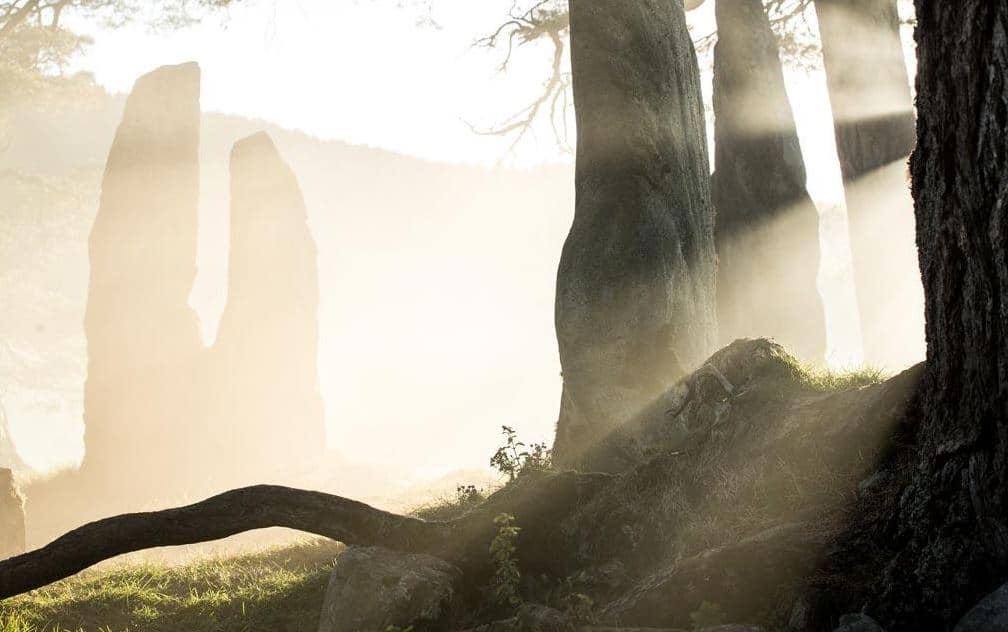
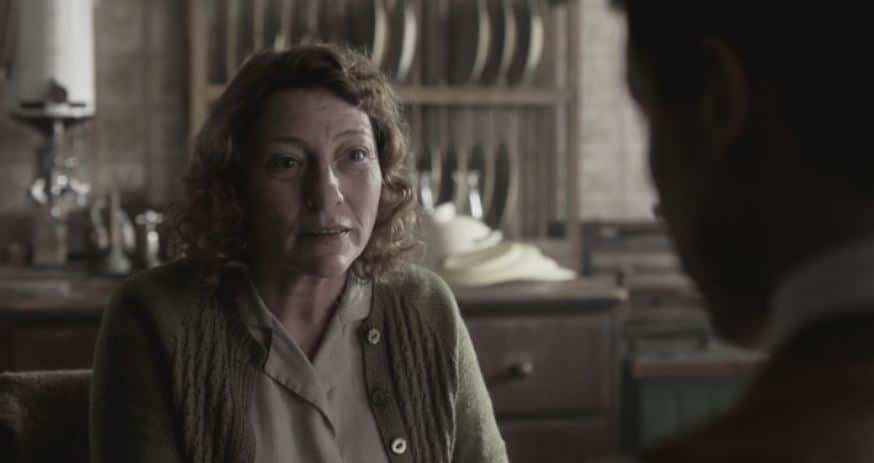
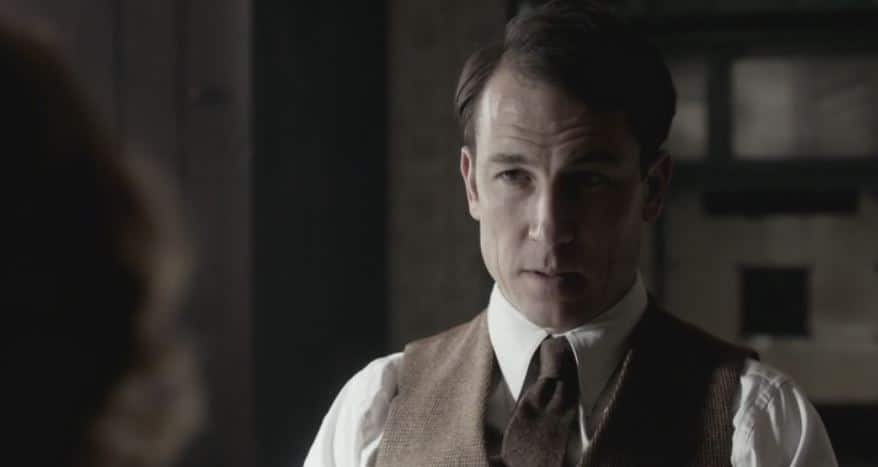
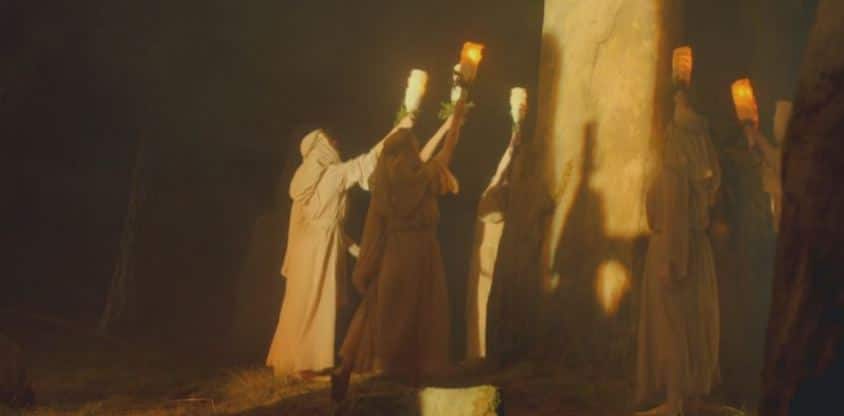
The other night after reading “The Fiery Cross” for a while, I headed for bed and it hit me, how 20 century Claire, Brianna, and Roger are going to live their lives into the 19 century, and in 1918 Claire would be born again, go on her 2nd honeymoon with Frank to Scotland the head straight back to Jamie.. An absolute time loop that Diane has created.. Not only with Claire and Brianna as travelers, but also Rogers story is a second-time loop. Then your given two hints of the possibility when Jamie appears as a ghost watching for Claire, and then again when Claire touches the skull and she has a hint from the past. Putting these all together with my mind and remembering Jamie reminding Claire that she inadvertently had changed the future, stopping a smallpox outbreak, saving a life. So then you think, little things, had blackjack Randle been killed at ft William after abducting claire.. would Frank have still be born, the answer is probably, but not with opulence he and his mother would not hold that projected down through the family, and Frank may not have been the educated historian. But Frank would have been born. If Jamie and Claire had succeeded in giving bonnie prince Charley a sendoff with Jasmine, that would have stopped colloden, the destruction of the highlands, the Jacobites. The birth of Willey, Jamies son.. the marriage to Laoghaire.. the journey to America right up to where I was reading the book.. Setting here in NC knowing of the Scottish history here. My Grandson’s family the McLendons ancestors settled here in NC on the upper coastline, Dennis the Immigrant, whose father had been one of the earlier Jacobite prisoners sent to the Bahamas, Dennis was born there and came to the colony.. Thanking you for listening.. I’m go back to the book..
The last trial for witchcraft in Scotland was in 1727 and the last execution in 1709. I wonder why the show pursued such a grave historical inaccuracy, and if there was anything v they could do to get around it, because they’ve done so well in the past.